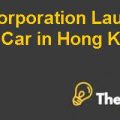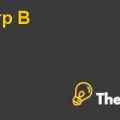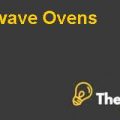
General Evaluation:
In view of the LinkedIn Corporation case study, I analyzed that, LinkedIn Corporation is one of the world’s biggest professional network services website that has over 200 million subscribers in more than 200 countries. It provides services in 15 different languages with 3700 employees.
The key strength of the company was the first mover advantage that was the point of references. They had started the six degree of separation that represents; every person is 6 steps away from one another in the world. It started the recruitment services on premium for the companies to recruit employees using the LinkedIn Corporation’s network. By offering these premium services they generated higher profits.
The recruiter services that LinkedIn Corporation offers are utilized by person to person communication to recruit people for the organization and this has the 56% ratio in the revenue generation for LinkedIn Corporation. The remaining 46% revenue portion comprises of the standardized services that the company offers.
This first mover advantage made the LinkedIn Corporation number 1 in the industry. From the analysis of proposed income statement given in the excel sheet, what I have observed is that they got 123% growth in revenue in the year 2011 with respect to the year 2009; in the year 2012 they got 145% growth in revenue generation and in the year 2013 the revenue growth is 169% with respect to revenues of the year 2009. By considering the growth in the revenues of the company, it can be said that the proposed revenue growth over year is 10%. LinkedIn Corporation’s proposed cost would also increase but it remained constant at 18% of revenue from the year 2011 till 2013. If we see the profits that LinkedIn Corporation would make in 2011 than it can easily be observed that it declined by 12% in the year 2010 profit but later on it increased by 10% in 2012 and 2013. It inflated by 21% with respect to the profits in 2011. From the analysis report that is given, what I conclude on the basis of product that LinkedIn Corporation is growing constantly and they are gaining customers on a daily basis and their customers are more than 200 million. If we consider the market capitalization of LinkedIn Corporation than we get to know that the company’s market capitalization is $627.200 million; which is much higher than the XINGAG’s market capitalization that is around $261.615 million.
If we consider the product than Linked Corporation is way better than its competitor XINGAG because in years 2007, 2008, 2009 and 2010; LinkedIn Corporation generated revenues from its products of about $32.486 million, $78.773 million, $120.127 million and $243.099 million respectively. (Refer the Exhibit 1 in the appendices). On the other hand, XINGAG’s revenue generation from its products in year 2007, 2008, 2009, and 2010 are $27.814 million, $48.582 million, $63.060 million, and $70.987 million respectively. (Refer the Exhibit 2 in the appendices).
Evaluation on the basis of Valuation approaches and Multiples:
There are different valuations model that can be used for the valuation of LinkedIn Corporation and what I observed in this case are given below:
DCF: Discounted cash flow is the approach that is used in perspective that how attractive LinkedIn Corporation is for investors to invest in it. To investors what amount of cash flows it could generate in future while discounting these by incorporating the weighted average cost of capital for determining the present value? In this case, the present value that comes out after discounting is about $1171 million. Under this approach, the only limitation is that it considers the valuation of constant discounting factor that is WACC in this case.
Return on Equity: This describes that how much LinkedIn Corporation can generate profit by incorporating the shareholders invested capital. It can easily be obtained by dividing the Net Income of LinkedIn Corporation through its total number of shareholders. LinkedIn Corporation’s investor can also determine the change in profitability by subtracting the initial ROE with Current ROE.
Return on Assets: It tells that the LinkedIn Corporation’s efficiency of generating profit by utilizing its assets. It can easily be calculated by dividing the LinkedIn Corporation’s Net Income with its assets. ROA has the limitation that it can only be viewed if there is another ROA available for the industry specific or for the similar company specific.
Comparable Multiples: Comparable multiple is the comparison method between the similar companies. It defines that how one company is performing with respect to the other similar company. Particularly for the LinkedIn Corporation’s scenario, the comparables can be viewed with the competitors like XINGAG and VIADEO. The comparable Multiples included as EV, EV/EBITDA, P/E ratio, EPS and DPS. All of these comparables explained that how much LinkedIn Corporation’s performance is better than its competitors.
Customer Life Cycle: Customer life cycle approach is used under the marketing concept and it defined that how customer ...........................
This is just a sample partial case solution. Please place the order on the website to order your own originally done case solution.












